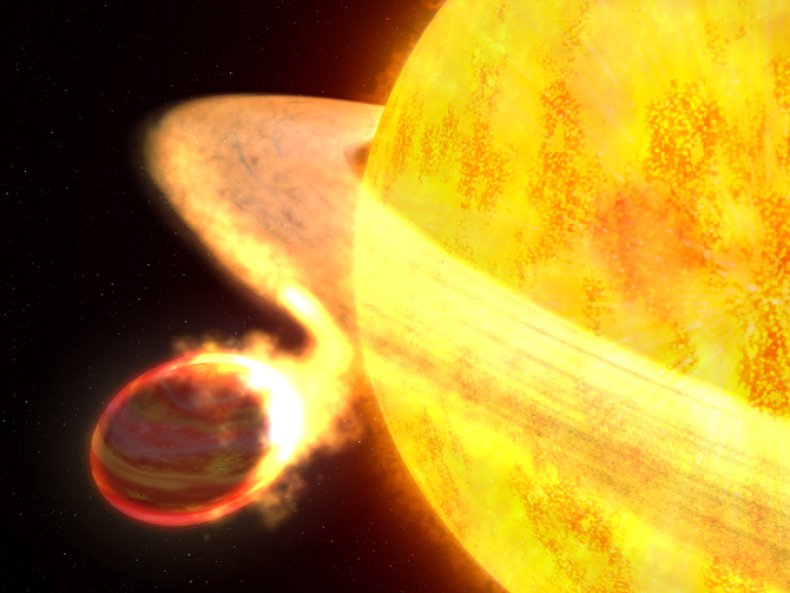Astronomers have discovered that as many as a quarter of stars like the Sun eventually consume their own planets, in findings which suggest that they have a chaotic and destructive history.
Source: Newsweek
The international team led by Lorenzo Spina, a postdoctoral research fellow at the Italian National Institute for Astrophysics, found hints that such a process might be occurring by studying exoplanet systems where the orbit of one planet seemed to be disturbing the other.
This led the astronomers to believe that if these disturbances were great enough, they could lead to planets falling into their parent star and being consumed.
The researchers say the only problem is that this hypothesis is difficult to test by simply looking at the planetary systems as they exist today.
“In most of these very dynamic systems, it is also likely some of the planets have fallen into the host star. However, we didn’t know how common these chaotic systems are relative to quieter systems like ours,” Spina wrote in an article for The Conversation. “Even with the most precise astronomical instruments available, it would be very hard to work this out by directly studying exoplanetary systems.”
In a paper published in the journal Nature Astronomy, the team revealed that the key to unraveling this mystery and determining how many planetary systems are likely to contain stars that consume their planets lies in the study of stars that form together in binary systems.
In the study, the authors say that stars that form together and go on to orbit each other in binary pairs should have the same chemical make-up. This is because they are formed of the same clouds of gas containing hydrogen, helium, and some heavier elements.
Yet, observations of binary pairs of stars show that sometimes the chemical abundances of one stellar partner in the pairing are different than that of the other. This could be happening because one star has engulfed a planet and the chemical elements from that world have enriched the outer layers of that star.
To investigate if this is indeed the case, the team looked at 107 different binary star systems containing stars that are like the Sun, and looked for stars that contain a higher proportion of material that is usually associated with planets.
The astronomers found that in 33 of those binary systems, one of the stars contained more iron than its stellar partner. Also, because the element lithium is quickly destroyed in stars but can be maintained in planets, finding high levels of lithium in a star indicates that the element arrived recently.
The astronomers say this implies that a planet had spiraled into one of the stars and dissolved, leaving traces of the elements that comprised it in the star’s outer layers.
The authors concluded that between 20 percent and 35 percent of planetary systems with Sun-like stars have a chaotic past that is very different from the calm and ordered history of our solar system, with the most probable proportion of chaotic systems being 27 percent.
Spina said this is a discovery that could have implications for our search for life elsewhere in the Universe, as the reason life was allowed to flourish on Earth is due to what he described as our solar system’s “orderly architecture.”
“These results represent a breakthrough for stellar astrophysics and exoplanet exploration,” Spina said. “Not only have we found that eating planets can change the chemical composition of Sun-like stars, but also that a significant fraction of their planetary systems underwent a very dynamical past, unlike our solar system.”

Source: Newsweek

































Leave a Comment
You must be logged in to post a comment.